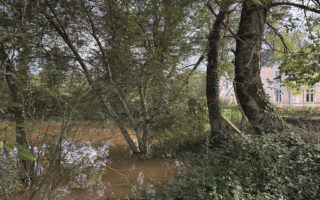Q&A: septic tanks
What should we know about septic tanks for our French home?
We have recently viewed a property in France that we would be very keen to take on as a renovation project. It’s in a very sorry state so would require major work. The ‘house’ is located in a rural village and there is no mains drainage, so we would need to install a septic tank. I believe there are certain requirements in France concerning septic tanks, so how would we go about this and what are our options?
Martin Benson
François Le Lan of Tricel Poitiers SAS, Tricel’s French subsidiary (tricel.fr), replies:
It is compulsory to properly treat the wastewater from any property in France. If you are considering buying a house in France, one of the first things to check is whether there is a wastewater treatment system (WWTS) in place and whether it conforms to recent legislation (decree of 07/09/09 modified on 07/03/12). This check must be carried out by the relevant local water authority, usually a technician from SPANC (Service Public d’Assainissement Non Collectif), whose details are available from the city council.
The official documents of the house for sale should include a report issued by SPANC that is less than three years old. If not, you should ask for it. This should be at the expense of the seller, as specified by French law. When buying a property, beware of sales documents that waive any responsibility with regard to the condition of the WWTS.
If the WWTS meets legal requirements, SPANC will come and inspect it, at least once every 10 years. If the WWTS does not meet the requirements, then as the buyer you must refurbish it within one year.
A good tip is to obtain quotes and use them to negotiate the price of the property!
French law now allows a variety of different options for wastewater treatment, which can be divided into three categories:
• Traditional systems
These consist of a septic tank followed by percolation drains, with various configurations depending upon the permeability of the soil. Often cheaper at the time of purchase, they take up quite some space and can get clogged over time (usually 10-15 years). The replacement of a sand filter after 10 or 15 years can cost as much as a new system and may ruin your garden during the construction.
• Compact filters
These are based on a similar principle, but – as the name suggests – are much more compact. If no pumping is required on the outlet, they do not consume any electricity. The risk of clogging and resulting smells can be high with some systems. The issue of replacing the filter media in the tank over a period of time can also be expensive.
• Microstations
These are very compact and if they are properly maintained they will not clog. They do, however, use electricity (around €50/year). They are ideal for main homes but are unsuitable for secondary homes (e.g. holiday homes with little wastewater going to the system on a regular basis). Fixed-bed systems will ensure the best performance and require the least amount of maintenance. They are adaptable to population variations without changing any settings, are simple to operate and create a lower volume of sludge, hence needing fewer ‘de-sludgings’.
All in all, you should base your choice on a variety of criteria: configuration of the site, availability of space, type of soil (think of rocks if you have to dig deep!), cost price (bearing in mind that cheaper is not always better), reputation of the manufacturer, ease of operation and maintenance, running costs and availability of local after-sales service.
Please be warned that compact filters and microstations must have an agrément ministériel (certification delivered by the Ministries of Health and Environment) so they can be installed in France. A European certificate or CE marking is not sufficient, so make sure you also ask for a copy of the French agrément.
Once you have decided on a solution, you need to fill out a ‘design and layout file’ for SPANC. When they have approved this (which may require a soil study by an engineer), you may proceed with the works. Once completed, SPANC will check the installed system which must be in accordance with the ‘design file’, before they issue a certificate of conformity.
Another good tip: if your house is more than two years old, the VAT that applies to the refurbishment works is 10% instead of 20%. If you buy the system through the installer, this low rate also applies, which can give you a considerable saving.
You can now move into your beautiful new house with peace of mind, but don’t forget that as the owner you are now responsible for the maintenance (including the regular de-sludging that is required) and the proper functioning of your system.
Share to: Facebook Twitter LinkedIn Email


